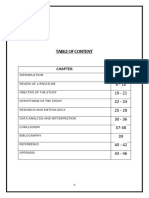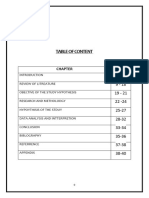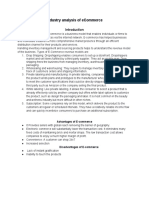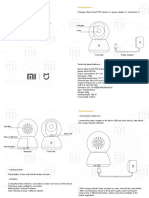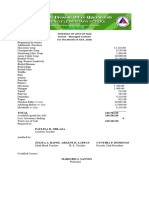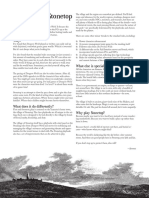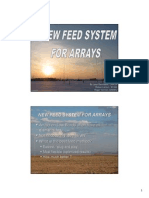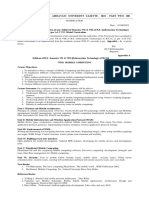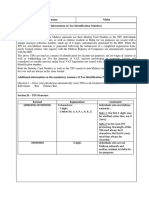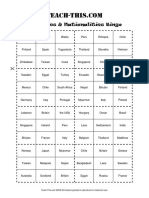E-Commerce Concepts
1. Pure vs. Partial E-Commerce
Definition and Concept
- Pure E-Commerce: Transactions in which all elements—product, process, and delivery—
are digital. Pure e-commerce encompasses online-only operations with no physical
presence or tangible goods. It is fully digital from start to finish.
- Partial E-Commerce: Involves a combination of digital and physical components. Here, one
or more stages in the transaction involve physical elements, such as delivery of goods or in-
store pickup.
Characteristics
- Pure E-Commerce:
- Digital Product: The product itself is electronic, like e-books, music files, or streaming
services.
- Digital Process: The entire purchasing process is completed online, including order
placement and payment.
- Digital Delivery: Products are delivered electronically with no need for physical logistics,
as seen with software downloads or virtual consultations.
- Partial E-Commerce:
- Physical Product: Typically involves tangible goods (e.g., electronics, clothing).
- Combination of Channels: May use a digital process for ordering (online website) but
requires physical logistics for delivery (shipping, in-store pickup).
- Physical Interaction: Some transactions may involve physical inspection, interaction, or
support, like trying on clothes or testing electronics before purchase.
Examples
- Pure E-Commerce: Netflix or Spotify (digital media services) and E-books on Amazon
Kindle (digital books).
- Partial E-Commerce: Amazon and Walmart’s Online Ordering with In-Store Pickup.
Advantages and Challenges
- Pure E-Commerce Advantages: Lower logistics costs, scalability; Challenges: Limited to
digital goods, high competition.
- Partial E-Commerce Advantages: Flexibility in product offerings; Challenges: Operational
complexity and channel conflicts.
Exam Tip: Differentiate between pure and partial e-commerce with examples,
understanding that pure e-commerce is fully digital, while partial e-commerce combines
�online and physical elements.
2. Unique Features of E-Commerce Technology
1. Ubiquity: Available everywhere and at any time, reducing geographical and temporal
barriers (e.g., mobile apps for 24/7 shopping).
2. Global Reach: Enables businesses to reach customers across borders (e.g., Amazon’s
global operations).
3. Universal Standards: Operates on universally accepted standards, reducing entry barriers
(e.g., HTTP, TCP/IP).
4. Social Technology: Supports user interactions and social sharing (e.g., Facebook
Marketplace).
5. Personalization and Customization: Tailors experience based on user data
(personalization) or allows user adjustments (customization).
6. Information Density: Provides transparency in prices and product information (e.g., price
comparison sites).
7. Interactivity: Facilitates two-way communication (e.g., Amazon customer service chat).
8. Richness: Conveys detailed information like images and videos (e.g., product demos on e-
commerce sites).
Exam Tip: Understand each feature and its impact on e-commerce, with examples that
illustrate how these features enhance accessibility, reach, and customer experience.
3. Personalization vs. Customization
Personalization
- Definition: Tailors content or experiences to individual user preferences using data-driven
insights.
- Example: Netflix recommends movies based on a user’s viewing history.
Customization
- Definition: Allows users to modify products or services to fit their own preferences.
- Example: Nike’s “Nike By You” for designing custom shoes.
Key Differences:
- Personalization is platform-driven, while customization is user-driven.
- Personalization predicts user preferences; customization allows users to adjust features
themselves.
Exam Tip: Remember that personalization is about the system adapting to the user,
�whereas customization is about the user adapting the product to their own preferences.
4. Electronic Markets
Definition and Concept
- Electronic Markets are online platforms where buyers and sellers meet to exchange goods,
services, or information.
Types of Electronic Markets
- B2C Markets: Businesses sell directly to consumers (e.g., Amazon).
- B2B Markets: Connect businesses for wholesale transactions (e.g., Alibaba).
- C2C Markets: Allows transactions between consumers (e.g., eBay).
- C2B Markets: Consumers offer services to businesses (e.g., Upwork).
Functions of Electronic Markets
- Price Discovery, Transaction Processing, Information Exchange, Matching Buyers and
Sellers.
Benefits of Electronic Markets
- Global Reach, Cost Efficiency, Enhanced Information Availability, Increased Competition.
Challenges
- Privacy and Security Risks, Trust Issues, Market Saturation, Dependence on Technology.
Examples: Amazon, Alibaba, and eBay.
Exam Tip: Understand the different types of electronic markets, their functions, benefits,
and challenges, with examples.






























